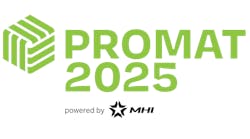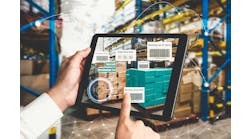When many people hear the word blockchain, they immediately think about bitcoin and crypto-currencies, conjuring up images of hackers and black markets. However, bitcoin is simply an implementation of blockchain—a technology that can be used to create powerful new capabilities in the supply chain world. One of these is creating the supply chain serialization capabilities we urgently need to evolve our supply chains.
Blockchain Explained
Before diving in, it’s worth taking a few minutes to review what blockchain technology is. A blockchain is a secure, digital ledger of data, organized in blocks that are linked together sequentially (hence the name). However, blockchain technology adds some key features to this digital ledger that open the doors to some amazing capabilities.
First, it’s important to understand that each link in the blockchain is completely secure and unbreakable. Once you add a link, it cannot be changed, moved, or deleted. Second, blockchains are decentralized and distributed. Parties can share data and execute transactions, with full security, without having to rely on any central authority or service provider to act as a clearing house. Third, the data on a block can be more than a simple ledger of facts—it can contain something called a “smart contract.” Smart contracts allow you to put instructions on the blockchain for execution at a later date.
Let’s take a look at how each of these key features enables us to create a ledger of every transaction for an item across the supply chain. Blockchain’s format guarantees the data has not been counterfeited and that it can be read by any authorized party (without reliance on a central vendor). What’s more, with smart contracts, we can create smart ledgers that autonomously trigger transactions when key supply milestones are met.
Serializing the Supply Chain Block-by-Immutable-Block
One of the challenges in serializing the supply chain is validating the serialization process. Blockchain sidesteps this entire costly validation process with its very DNA. Every addition to the blockchain has a time-stamp and a cryptographic key signature that is counterfeit-proof. Privacy hawks approve that blockchain technology allows precise control over who is allowed to add to the chain (and when), safeguarding data privacy. Once you put data on the blockchain, it is there forever. It cannot be removed or altered; it is immutable. Every amendment, be it a booking change or a schedule change, is preserved in order.
As long as you are using an accepted blockchain technology—Hyperledge and Etherium are two popular options—you do not have to prove you are adhering to the immutability requirements of an audited system. Because blockchain technologies demonstrate the purity of the data automatically, companies forego computer systems validation, which represents a huge cost saving.
Moving forward, every serialization action or hand-off becomes a block on the chain. Acquire the source materials: add a block. Hand them to a carrier to transport to a plant: add another block. Re-book the carrier: add another block. Arrive at the plant: add two more blocks, one for proof of delivery, another for goods receipt. Process the materials into a product: extend the chain with another block. Every step is captured with a full audit trail that cannot be tampered with. And so on, from source to end-customer receipt. Figure 1 illustrates an example of blockchain (click the download button at the end of the article to view the illustration).
This combination of security and immutability provides an integral level of integrity to supply chain serialization. However, these exchanges among parties bring us to another serialization challenge: integration. Luckily, blockchain’s distributed nature solves that as well.
Always Available: A Shared, Distributed “Source of Truth”
By its very definition, the supply chain world is distributed. Thousands of suppliers, carriers, freight forwarders, expeditors, insurers and many other parties are working to produce, store, ship and deliver materials and goods across virtually every time zone on Earth. On any given day, any supplier is adding new carriers, customers and raw materials suppliers. Asking all of these parties to integrate with each other on a continual basis is impractical. Blockchain’s distributed nature solves this challenge, again by completely sidestepping the problem.
By design, blockchain has no central system, which absolves the need for integration. The material provider starts the chain and authorizes the carrier and receipt plant to add to the chain. The plant manufactures these materials into goods, and passes the chain along, allowing others to add to it. You might say the blockchain protocol does for serialization what the HTML protocol did for web pages. Everyone can read and exchange information without a custom installation of software. This is valuable because it reduces integration needs exponentially.
In fact, the distributed nature of blockchain adds additional value as it removes the entire concept of a central clearing house or source vendor. This allows all parties in the supply chain to exchange data independently. No source vendor means there is no need for a recurring contract or service provider relationship. More significantly, no single party can lock others out of the data or be “down for maintenance.” The blockchain can be verified and added to by any party along the chain of custody with complete independence.
This resiliency makes the blockchain-based serialization record something that can always be trusted to be available when needed. However, the third noteworthy feature of blockchain (and my favorite)—smart contracts—enable us to take the serialized supply chain one step further.
Adding Autonomy with Smart Contracts
As a reminder, each block on the digital blockchain ledger does not have to simply be data. A block can also contain code that executes when a set of conditions are met. This is known as a “smart contract.” The addition of smart contracts to the blockchain empowers us to create an utterly autonomous supply chain.
A typical smart contract might look like this: When the goods are delivered to a specified destination and a further block is added confirming that goods are in acceptable condition, issue payment to the supplier. When linked to a crypto-currency (e.g., bitcoin, or BTC for short), this enables autonomous, self-paying contracts.
An example could be: When I download a song and play it for the first time on a device, the smart contract issues 0.00049 BTC to Taylor Swift (USD $1.29). This self-executing contract removes middle-men from the transaction (no banks, no central e-commerce servers such as iTunes, etc.). It even circumvents digital piracy—every new device that plays the song for the first time pays.
Admittedly uber-autonomous smart contracts may be a bit beyond what most people would be comfortable with at this time. It is also not well integrated with mainstream business (I have yet to see any commercial shipper quote prices in BTC). Luckily, there are more practical smart contracts for supply chain that are ready for prime time. Two that come immediately to mind drive much of the payments on shipping: Proof of Delivery and Goods Receipt.
The Proof of Delivery smart contract would issue a transaction once the shipped materials or goods are detected at a delivery location. Note: This does not have to be a bitcoin transaction. We could simply issue an EDI214 X1NS to a VAN for forwarding to the shipper and carrier, triggering the already established, trusted, and integrated invoicing and payments process. Instead of diverting into the world of crypto-currency, we have effectively streamlined existing processes and removed a source of delay.
A similar Goods Receipt smart contract could trigger a second process once the customer adds a “Verification of Goods Receipt” block to the serialized blockchain.
Simplifying Smart Contracts Using Sensors and IoT
Adding sensors and Internet of Things (IoT)-connected actuators are the final step to making blockchain-based supply chain serialization truly autonomous. Let’s take the above-mentioned Proof of Delivery smart contract. Now, when a sensor detects the shipment is at the facility, it can append the event to the blockchain (with the detected GPS coordinates and time), triggering the smart contract. This not only saves tedious work, it immutably appends that event to the blockchain and removes a source of bias.
However, this is just one place of many where sensors and blockchain can extend supply chain serialization. For example, an environmental sensor logger can append a fact that no shock or temperature excursions happened during the shipment (simplifying the Goods Receipt process). Today hospitals can use sensors to append to the blockchain that the correct dosing of the serialized, verified lot of medication was administered to the correct patient. Just one illustration of how sensors and blockchain can add safety and deliver serialized assurance.
This Future is Now
While this discussion of blockchain may sound futuristic, all the technology to implement it exists today. The security and immutability of blockchain is a proven fact. Several open source projects already exist for the creation of industry-specific blockchain solutions. Two of these (Etherium and Hyperledger) have a range of service providers that can help companies onboard the technologies (although all are implementable on their own).
Many companies are working together to standardize hyperledger contents and shared contracts, some using industry consortiums, others on open Wikis. It’s an exciting time in supply chain. The time to pick a pilot use case and get started is now. MH&L
Jim Haughwout is the chief technology officer of Savi Technology, a provider of Big Data/machine learning analytic solutions, supply chain management software, and sensor technology. His 25 years of work in sensors, data and e-commerce include 15 years building technology for several high-security, regulated industries.









